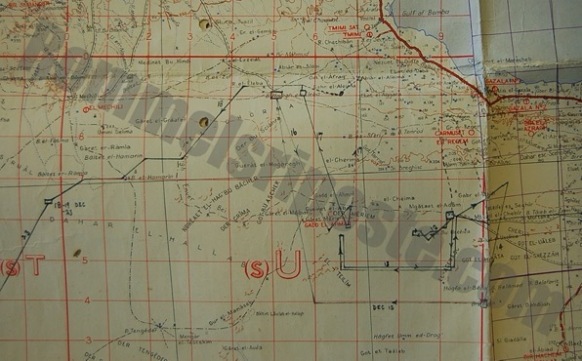Background
In previous posts (at this link, at this link, and at this link), I had written something about the reliability of the Crusader tank, and the other cruiser tanks used in the desert.
Tank Losses at El Haselat
I have now come across a letter to the Brigade commander of 22 Armoured Brigade, presumably a response from an office in Cairo to what might have been a complaint about the mechanical reliability of the Cruiser tanks.
The letter deals with the impact of the long-distance approach march of 22 Armoured Brigade from the re-organisation area south of Gabr Saleh, where new tanks were drawn, to the operational area south of Agedabia.
Assessment
While the letter has the sound of a poor workman blaming his tools, there is some truth in the matter. Tank casualties caused by breakdowns were heavy in the brigade, accounting for about 1/3rd of the fighting strength of the Brigade during the approach march and battle, considering the total number of tanks, but almost half of the Cruiser tanks (the American M3 Stuarts were much more reliable, but not considered fit for mainline action anymore).
As the crow flies, the approach march was at least 600km (ca. 400 miles) from the railhead at Sidi Barrani, and in reality considerably more since the Brigade had taken a rather convoluted path to the battle area.
Regardless of the cause, by the end of the year, 22 Armoured Brigade, which had started out a week before with 76 cruiser tanks and 40 M3 Stuarts, retained 8 cruisers and 21 of the original Stuarts (9 Stuarts rejoined from a detached squadron during the battle).
The last week of the year 1941 had been a disaster for the Empire tank forces.

Approach March, 2 Royal Gloucestershire Hussars, December 1941. TNA Kew, W)169/1397 2 RGH War Diary. Rommelsriposte.com Collection
Subject: Reconditioning of Cruiser Tanks
To:- Bde Commander, 22 Armd Bde
From:- B.O.M.E. [1]
4 Jan 42
The reason for the large number of cruiser tank casualties due to mechanical troubles in the last battle and approach march[2] was undoubtedly due to the fact that 90% of the tanks have exceeded the designed mileage before a complete overhaul becomes necessary. This overhaul mileage was assessed at 1200 miles and prior to the last battle most of our tanks had exceeded 1200 miles and many 1500[3].
The above fact reacted in two ways. First, there was a large scale failure of water pumps, air compressors, and main fan drive sprockets due to wear or length of service. Secondly, owing to inadequate supply of new parts for the above assemblies, “cannibalisation” was carried out among parts which although at the time still function had already performed as many hours of service as the parts they replaced.
This method could only afford temporary relief and obviously in the case of tanks still operating with the Brigade fitted with such parts, no estimate of remaining life can be given with any degree of confidence.
Furthermore, at this stage, it is doubtful if fitting new water pumps assemblies etc., will appreciably lengthen the present life of the tank as cases are occurring more frequently of tanks becoming Z[4] casualties repeatedly with different fault on each occasion.
Field
RHA/RAH
(Sgd). R.H.ARBUCKLE
Capt.
R.A.O.C. [5]
Sources
WO169/1294 – WD 22 Armoured Brigade 1941
Notes
[1] Presume this to be ‘Bureau of Ordnance, Middle East’, but happy to be corrected
[2] The ‘last battle’ was the battle in the Uadi al Faregh between Christmas and New Year in the Uadi al Faregh, in which 22 Armoured Brigade received a savage beating at the hands of the Axis forces.
[3] Puts the service interval on my old A4 in perspective. Although it too has coolant pump issues!
[4] Tank casualties were classified x/y/z with ‘z’ being immobilised.
[5] Royal Army Ordnance Corps – the branch of the British army dealing with keeping stuff functioning (there was a reorganisation in 1942).

Andreas,
I think B.O.M.E. is Brigade Officer Mechanical Engineering. This was before the establishment of the REME so the fact that the author is RAOC would also fit.
Cheers
Tom
LikeLike
More likely than my hapless guess. 🙂
Many thanks!
Andreas
LikeLike
In fact, Capt R.H. Arbuckle was the C.O. of 22 Armd Bde Recovery Section RAOC. Source WO169/1299 – that unit’s war diary.
It sounds like they must have been busy!
Regards
Tom
LikeLike